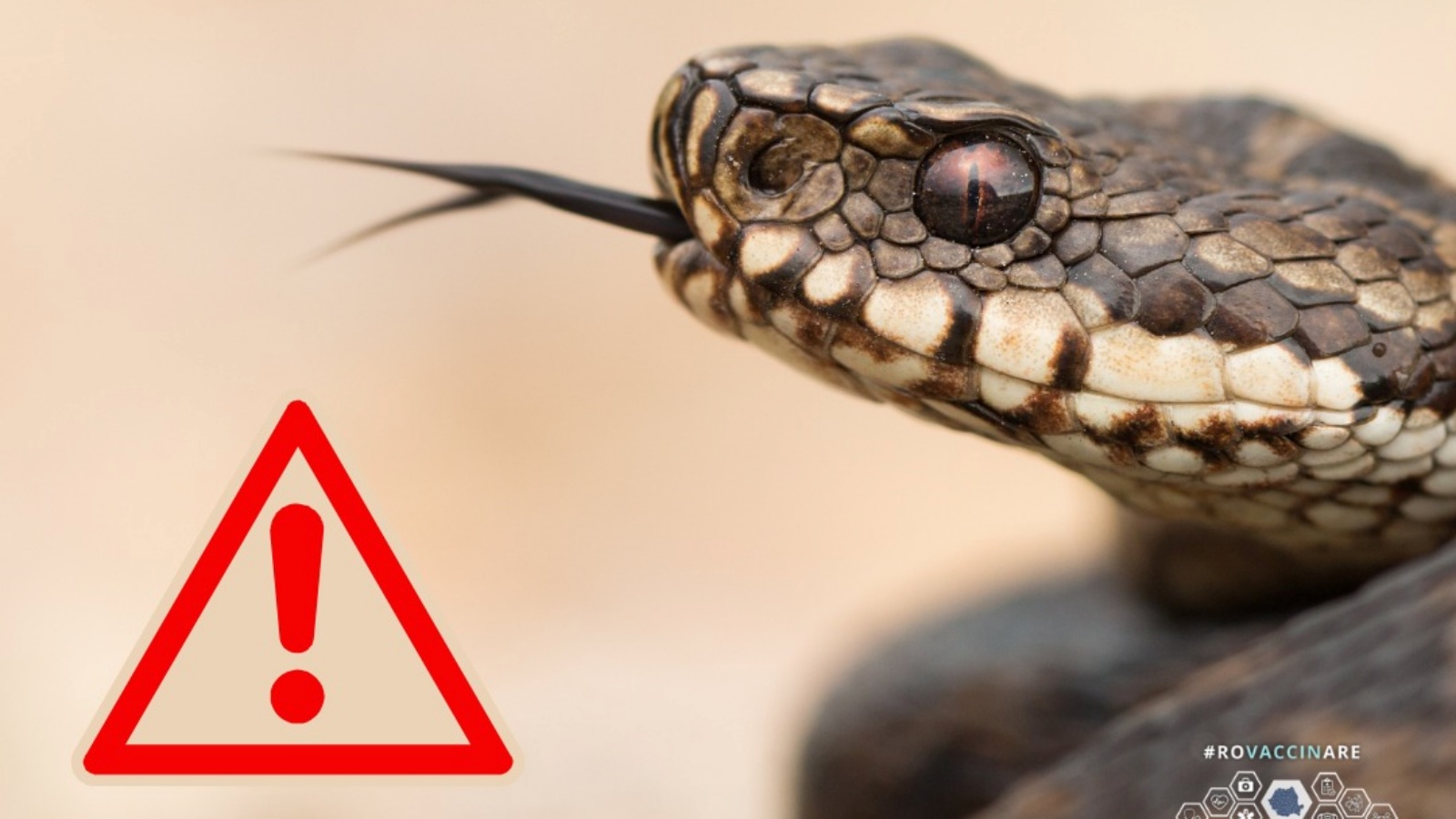The authorities in Romania thought that it would not be a bad idea if they taught Romanians how to avoid viper bites, or how to provide first aid in case of need, and below you have all the details.
Viper bite - prevention and first aid.
Vipers do not perceive sounds well, but they have a sense of smell and feel vibrations from long distances, and in temperate zones they are active only for six to seven months, in winter they are in a state of hibernation.
Vipers feed more at night, are poisonous right from birth, bite rapidly and leave two punctate wounds (teeth marks).
There are mainly three species of very poisonous vipers living in our country.
The bite occurs as a means of defense of the viper if it feels threatened and in danger.
Viper bite - preventive measures:
– Avoid unfamiliar, unmarked areas with tall grass.
– Use long sticks to check where you are going. The snake will attack the stick if there is one in the area.
- Leave the snake alone if you see it and don't even touch it if it seems dead.
– If you see a snake, notify the group and leave the area as quietly as possible.
– Wear high boots, pants, snow guards to protect yourself.
Vipers can be found from May until September, after which they go into hibernation.
Vipers are most active during the mating season, i.e. between June and August.
Before venturing out on the trails, it is good to inform the mountain rescuers of the routes you want to go on in order to receive the best advice.
If you are bitten by a viper, you should know that you can die in five hours, by suffocation, but death in such cases rarely occurs. One reason is given by the fact that more than half of viper bites are "dry" without venom inoculation.
The symptoms of a viper bite are as follows:
Local signs are sometimes accompanied by general signs: anxiety, sweating, nausea, vomiting, abdominal pain, hypotension, tachycardia, going up to convulsions, acute respiratory failure and cardio-respiratory arrest, when there is a serious anaphylactic reaction.
Classification of viper bites according to the degree of toxicity:
– Grade 0 (no toxic reaction) – traces of the bite, no edema (“swelling”) locally.
– Grade 1 (minimal toxic reaction) – local edema (swelling) around the bite, no systemic reaction.
– Grade 2 (moderate toxic reaction) – edema of the entire bitten limb, minimal systemic reaction (vomiting, transient arterial hypotension).
– Grade 3 (severe toxic reaction) – edema rapidly extending to the trunk, shock, hemorrhage or other systemic reactions.
What first aid measures can be given:
Ideally, the victim should reach a doctor as soon as possible, the only effective treatment being a dose of antivenom. After calling 112, check if the first aid unit has anti-viperine serum in stock.
Position the victim in a supine position, with the head and torso slightly elevated and the bite site positioned below the level of the heart. Physical activity must be as little as possible, in order to have a pulse as low as possible.
An elastic band is applied, wide enough to allow the venous and arterial blood circulation, but to achieve a lymphatic compression (to allow the introduction of the index finger under the band).
After fitting the tape, clean the wound with soap and water or with the antiseptic wipes from the first aid kit. Any jewelry or other items that are tight on the body (belts, suspenders) will be removed, because in case of adverse reactions to the venom, such as anaphylactic shock-type swelling, clothes and accessories will pose serious problems for removal.
Thermal comfort is ensured and, if possible, oxygen is administered. Monitoring the victim's vital signs (pulse and breathing) will be done continuously. Trace the edge of the swollen area every 15 minutes with a pen to help doctors judge the degree of venom exposure.
What NOT to do:
– DO NOT try to cut along the fang marks and do not suck the blood with the venom, because it spreads so quickly that you will not have a chance to extract much.
– A cut in the skin only creates an ugly wound and increases the risk of infection, with no real medical benefit.
- DO NOT apply a suction device except by medical personnel.
– DO NOT apply a tourniquet, because if the venom remains concentrated around the bite, it will quickly destroy the cells, but if it is allowed to spread, the toxins will be diluted and the risk of tissue damage will be reduced.
- DO NOT apply ice or cold objects, because the extraction of the venom by suction can be seriously hampered by the strong cooling of the area.
- Antiviperine serum will NOT be used as a first aid measure in the field, because many people have different allergies and can have an anaphylactic shock.
- Alcoholic drinks, coffee and stimulants will NOT be consumed.
Important: seek medical help!








